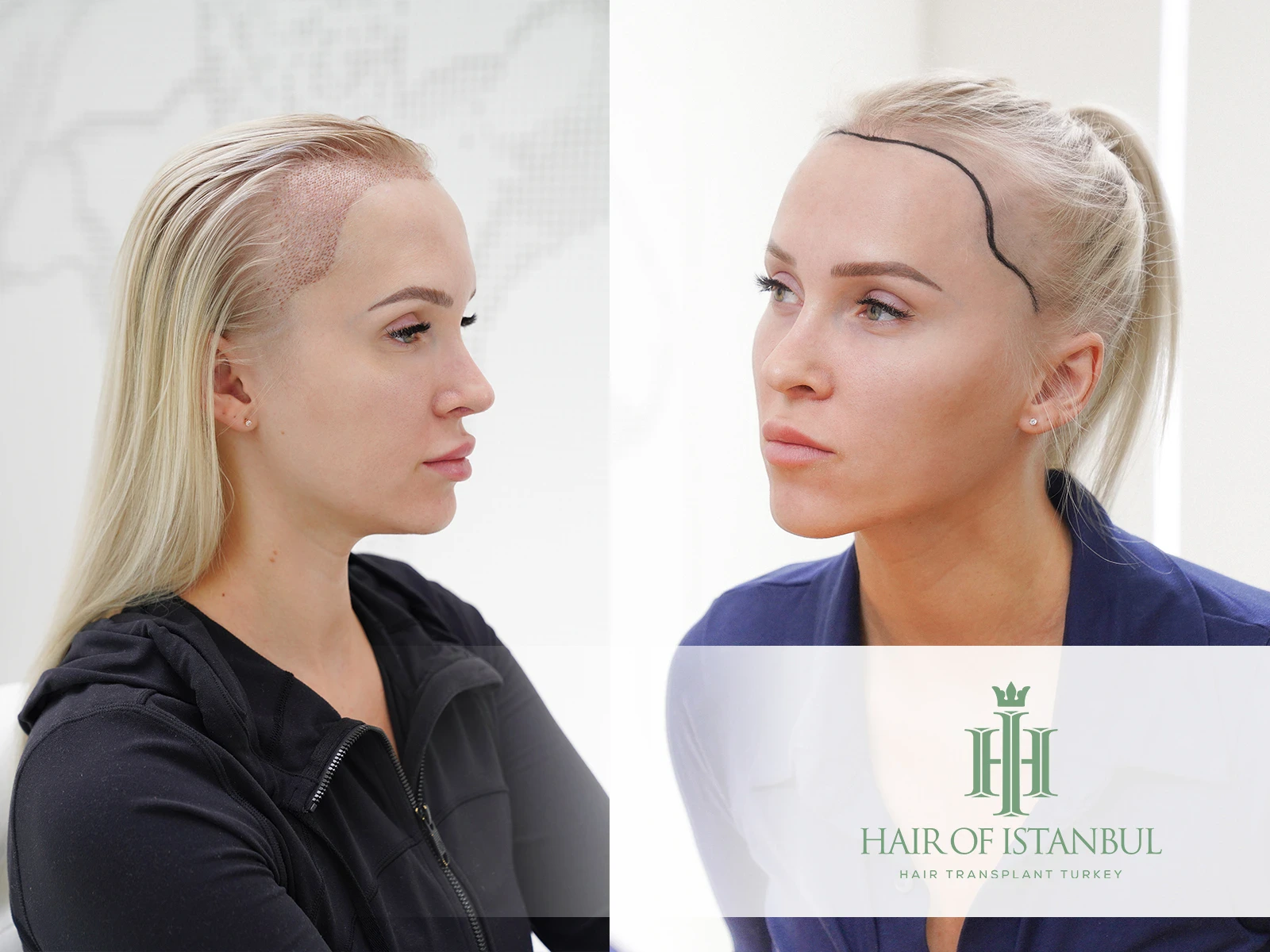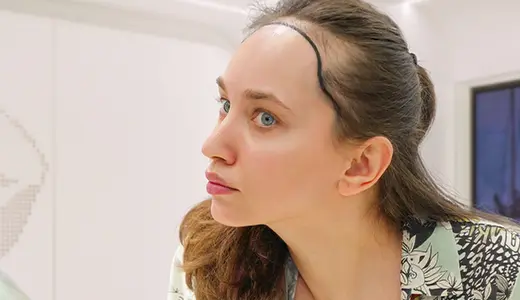
Female Hair Transplant and Restoration
Hair loss in women is more common than many realize, and its emotional impact can be significant. Unlike male pattern baldness, female hair thinning often follows a diffuse pattern, making diagnosis and treatment more complex. With modern techniques, female hair transplant and restoration has become an effective and reliable solution for women seeking natural and long-lasting results.
At Hair of Istanbul, we approach female hair transplant and restoration as a personalized medical journey, combining advanced surgical techniques with evidence-based planning.
Why Women Experience Hair Loss
The causes of hair loss in women are diverse and often multi-factorial:
- Genetic predisposition (female pattern hair loss)
- Hormonal changes (pregnancy, menopause, thyroid imbalance)
- Stress, nutrition, and lifestyle
- Autoimmune conditions (such as alopecia areata)
- Overstyling and traction alopecia caused by tight hairstyles
Each case must be assessed individually, as the treatment strategy differs significantly depending on the underlying cause.

How do I choose the best clinic for women’s hair restoration?
Selecting the right clinic is one of the most critical decisions for long-term success. Women should look for:
- Experience with female cases: Female hair loss patterns are different from men’s, requiring tailored approaches.
- Multidisciplinary medical team: Plastic surgeons and anesthesiologists should be directly involved in the process.
- Medical safety standards: Pre-operation evaluation, anesthesia monitorization, and sterile surgical conditions are essential.
- Portfolio of female results: Clinics should show before and after results specifically for women, not only male patients.
- Aftercare and follow-up: The best clinics provide structured follow-up care for at least 12–18 months after the operation.
What is the recovery process like after a female hair transplant and restoration?
Recovery after a female hair transplant and restoration generally follows a predictable timeline:
- Days 1–10: Mild redness and scabbing. Most patients can return to light daily routines within a week.
- Weeks 2–4: Temporary shedding of transplanted hairs, which is a natural part of the growth cycle.
- Months 3–4: Initial regrowth begins, usually fine and thin at first.
- Months 6–9: Noticeable improvements in density and coverage.
- Months 12–18: Final results with full natural integration.
Women often heal faster than men thanks to better scalp vascularity. Still, strict adherence to aftercare avoiding tight hairstyles, chemical treatments, and heat styling is essential for protecting grafts.
What are the latest techniques for female hair transplants?
Recent innovations have significantly improved both outcomes and patient comfort:
- FUE (Follicular Unit Extraction): Gold standard technique with no linear scar and precise follicle extraction.
- DHI (Direct Hair Implantation): Enables targeted placement of grafts, ideal for frontal or part-line restoration.
- Sapphire FUE: Uses sapphire blades for denser implantation and natural-looking hairlines.
- Regenerative therapies: PRP, mesotherapy, and Regenera Activa can accelerate healing and stimulate existing hair.
- Hybrid approaches: Combining transplantation with regenerative medicine for maximum density and long-term stability.
Supportive Therapies in Women’s Hair Restoration
In addition to female hair transplant and restoration, supportive treatments can enhance results:
- PRP (Platelet-Rich Plasma): Improves graft survival and stimulates miniaturized hairs.
- Mesotherapy: Delivers vitamins and growth factors directly into the scalp.
- Regenera Activa: Provides cellular regeneration to slow down shedding and promote healthier growth.
When combined with female hair transplant and restoration, these therapies often enhance density, healing, and long-term success.
Bu gönderiyi Instagram’da gör
Frequently Asked Questions (FAQ)
1. Is female hair transplant permanent?
Yes. Female hair transplant and restoration follicles are genetically resistant to shedding, providing lifelong growth.
2. Can women with diffuse thinning have hair transplants?
Yes, but donor capacity and overall hair quality must be carefully evaluated. In some cases, supportive therapies are combined with transplantation.
3. What is the success rate of female hair transplants?
In experienced clinics, graft survival typically ranges between 85–95%, with high levels of patient satisfaction.
4. Do female hair transplants look natural?
Yes. When hairline design and density planning are tailored to female hair transplant and restoration, results integrate seamlessly with native hair.
5. How much does a female hair transplant cost?
Costs vary by location and complexity. In Istanbul, leading clinics offer all-inclusive packages starting around $4,500.
Conclusion
Female hair transplant and restoration is no longer a niche adaptation of male techniques it is now a specialized, evidence-based field with high success rates and natural outcomes. Women struggling with hair thinning can now access treatments that are safe, personalized, and designed for long-term success.
At Hair of Istanbul, female patients are treated with the highest standards of medical safety, artistry, and long-term planning ensuring results that restore not just hair, but also confidence.
 en
en  TR
TR  SK
SK  ITA
ITA  FR
FR  DE
DE  ES
ES  BG
BG